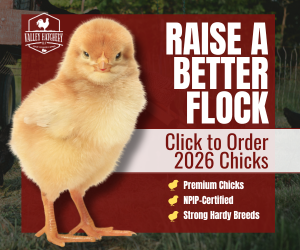Svyetii
Chirping
Hi everyone!
I purchased my first flock of five poulets in September and it looks like I have a rooster. While he’s beautiful and I’d love to keep him, roosters are not allowed in the city, so we’ll have to find a new home for him (or maybe process him?? ). With that in mind, I’d like to add another chick or two to the flock. I know it’s best to add them in groups, but I really can’t fit more than two or three more. So my question: should I buy two or three chicks this spring and try to introduce them from a young age, or would it be better to buy one or two older birds? Which would be more likely to result in a successful and easier integration? My current flock is comprised of a lavender and buff Orpington, an Easter egger and an olive egger. All are between 11 and 12 weeks old.
). With that in mind, I’d like to add another chick or two to the flock. I know it’s best to add them in groups, but I really can’t fit more than two or three more. So my question: should I buy two or three chicks this spring and try to introduce them from a young age, or would it be better to buy one or two older birds? Which would be more likely to result in a successful and easier integration? My current flock is comprised of a lavender and buff Orpington, an Easter egger and an olive egger. All are between 11 and 12 weeks old.
Secondarily, the chicks are unvaccinated and fed unmedicated feed (there had been some question about their vaccination status early on and I received confirmation only later that they were unvaccinated). Is there any issue with me introducing a new chick(s) that are vaccinated?
I appreciate any input or advice you might have.
Thanks!
I purchased my first flock of five poulets in September and it looks like I have a rooster. While he’s beautiful and I’d love to keep him, roosters are not allowed in the city, so we’ll have to find a new home for him (or maybe process him??
Secondarily, the chicks are unvaccinated and fed unmedicated feed (there had been some question about their vaccination status early on and I received confirmation only later that they were unvaccinated). Is there any issue with me introducing a new chick(s) that are vaccinated?
I appreciate any input or advice you might have.
Thanks!




 This right here! In the 2 1/2 years I've had chickens I've only gone 1 winter (it was actually only 2 months, lol) without eggs because I add to my flock every Spring/Fall.
This right here! In the 2 1/2 years I've had chickens I've only gone 1 winter (it was actually only 2 months, lol) without eggs because I add to my flock every Spring/Fall.
